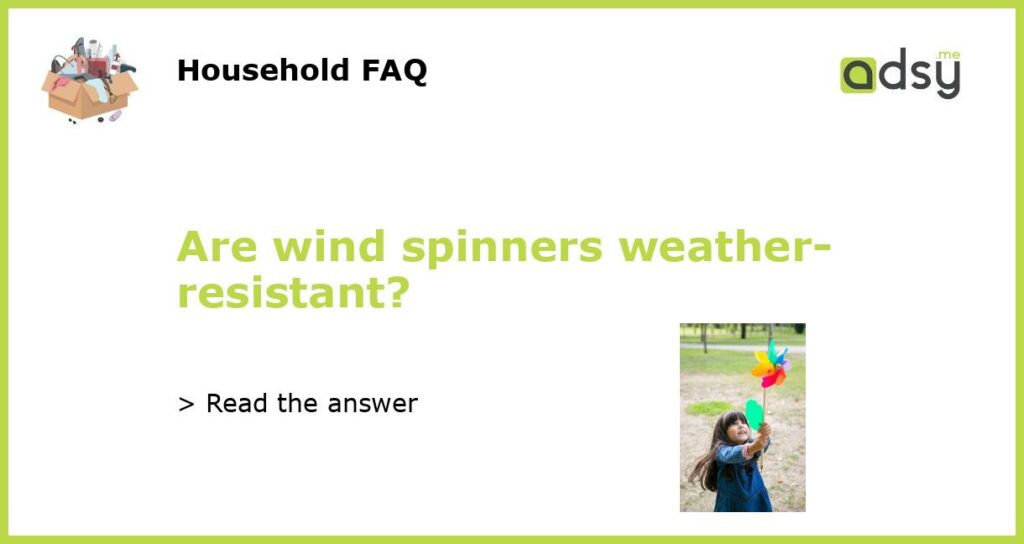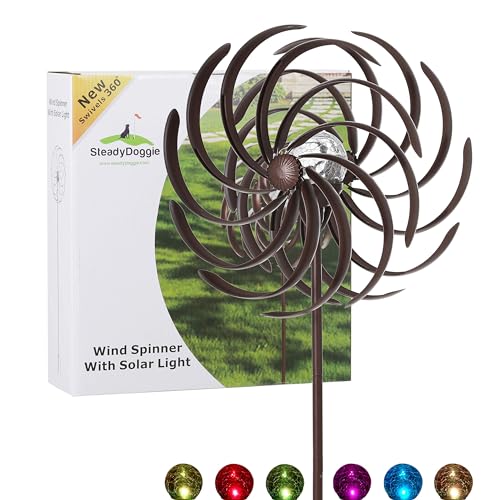Wind Spinners – Fun and Eye-Catching Outdoor Decor
Wind spinners are delightful outdoor decorations that add a touch of whimsy and movement to any space. They come in various shapes and sizes, from colorful pinwheels to intricate metal designs. One of the key considerations when choosing a wind spinner is whether it is weather-resistant. After all, wind spinners are designed to spin and twirl in the wind, so it’s only natural to wonder if they can withstand the elements.
Understanding the Materials Used in Wind Spinners
When it comes to determining the weather-resistance of wind spinners, the materials used in their construction play a crucial role. Wind spinners are typically made from materials such as metal, plastic, or fabric. Each material has its own unique characteristics and level of durability.
Metal Wind Spinners – Built to Last
Metal wind spinners are known for their sturdiness and longevity. They are usually made from stainless steel or copper, which are highly resistant to rust and corrosion. These materials can withstand exposure to rain, snow, and harsh sunlight without losing their appeal. Metal wind spinners are often coated with a protective finish to enhance their durability.
Plastic Wind Spinners – A Budget-Friendly Option
Plastic wind spinners are lightweight and affordable, making them a popular choice for many. However, their weather-resistance can vary depending on the quality of the plastic used. Higher-quality plastic wind spinners are more likely to withstand prolonged exposure to the elements without fading or warping. It’s important to look for wind spinners made from UV-resistant plastic if you want them to retain their vibrant colors.
Fabric Wind Spinners – Not As Resistant
Fabric wind spinners, also known as windsocks, are made from various types of fabric, such as nylon or polyester. While fabric wind spinners can add a soft and elegant touch to outdoor spaces, they are generally not as weather-resistant as metal or plastic spinners. Fabric wind spinners are more prone to fading, tearing, and general wear and tear when exposed to the elements. To prolong the lifespan of fabric wind spinners, they should be brought indoors during harsh weather conditions.
Taking Care of Your Wind Spinners
Regardless of the material, it’s important to take proper care of your wind spinners to ensure their longevity. Here are some tips:
- Regularly clean your wind spinner with mild soap and water to remove any dirt or grime that may accumulate over time.
- Inspect your wind spinner for any signs of damage, such as loose parts or rust. Address any issues promptly to prevent further damage.
- During severe weather conditions, such as storms or high winds, consider temporarily taking your wind spinner indoors to protect it from potential damage.
- If your wind spinner has delicate or intricate parts, such as crystals or glass ornaments, handle them with care to avoid breakage.
By following these simple care tips, you can ensure that your wind spinner remains in good condition and continues to bring joy and movement to your outdoor space for years to come.






